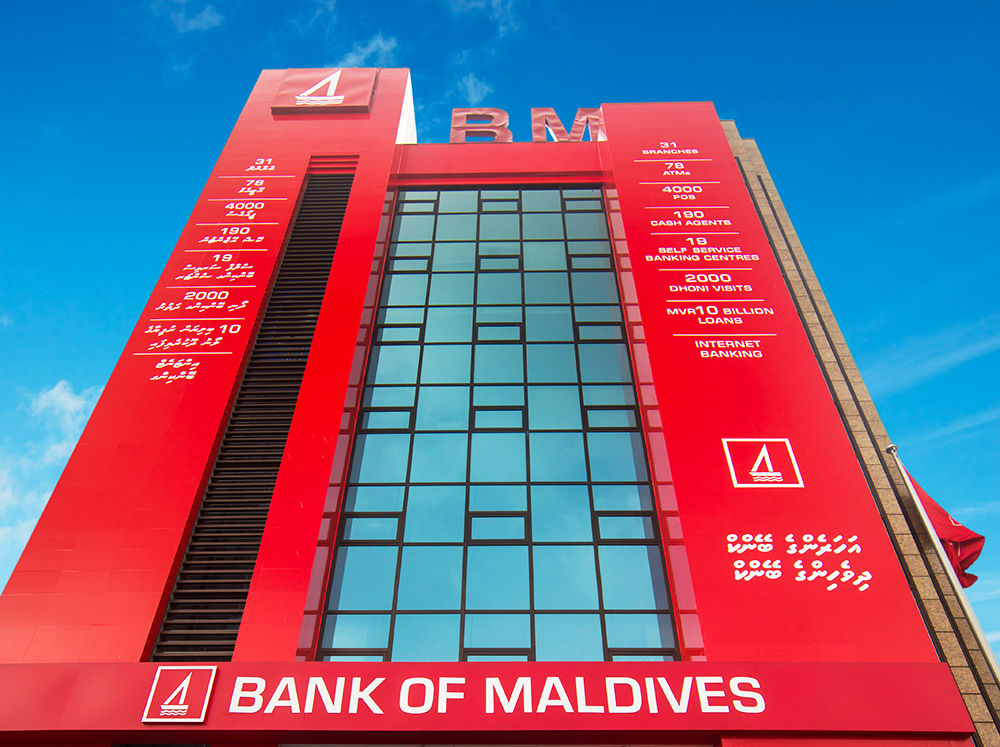Bank of Maldives (BML) has released its fourth quarterly report for the year ended 2020.
The fourth quarter (Q4) of 2020 generated a gross income of MVR 728 million and this is an increase of 3.4% compared to Q4 of 2019.
Due to the nature of the services provided by the bank, the Covid19 pandemic negatively impacted its financial performance. The Operating Profit stood at MVR 376 million while BML incurred a loss of MVR326 million in Q4. The loss was due to significant provisioning on restructured credit facilities.
The operating expenses increased 17% amounting to MVR 202 million in Q4 of 2020 compared to MVR 173 million in Q4 of 2019.
The unaudited figures indicate that the Profit after tax for the year end 2020 is at MVR 329 million, which is a drastic decrease of over 60% when compared to 2019. The bank reported over MVR 1 billion as its Profit after tax in 2019. The Bank’s lending is reported at MVR 3 billion and the total assets grew up to almost MVR 5 billion in the past year.
The Earnings Per Share for Q4 was reported at a loss of MVR 243 per share while the Earnings Per Share for the year ended 2020 was reported at MVR 61 per share. The dividend yield for 2020 stood at 12.1%, an increase of 1.2% compared to 2019.
The Market Capitalization of BML was over MVR 1 billion indicating a tremendous market value of its outstanding shares .
BML is prepared to continue to support the Maldivian economy in the year ahead despite the uncertainties in the market.
CEO Tim Sawyer
BML played a pivotal role in keeping the Maldivian economy afloat with loan moratoriums, working capital support for SMEs, and assistance to the government with the Covid-19 Recovery Loan Scheme, the Income and Profitability of the bank was hit hard and is reflected in the financial figures reported. However, important financial indicators such as the liquidity and capital ratios remained stable and above regulatory limits despite the Net Loss generated.





